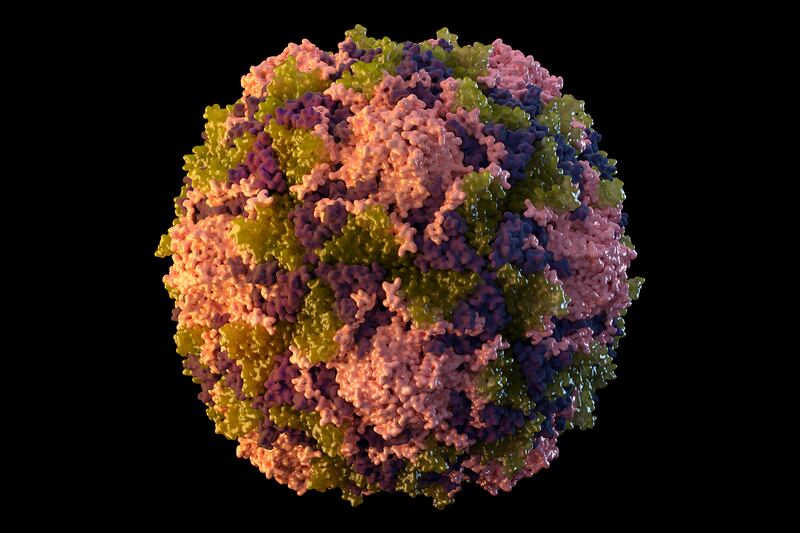The United States has officially joined the list of about 30 countries worldwide where polio is circulating.
The announcement by the Centers for Disease Control and Prevention Tuesday comes because the poliovirus is spreading in New York after a 20-year-old man from an Orthodox Jewish community in a New York City suburb was diagnosed in July with the nation’s first polio case since 2013.
Polio, which can cause paralysis, has since been detected in wastewater from four counties in New York as well as from the boroughs of New York City. Last week, New York Gov. Kathy Hochul declared a state disaster emergency over polio and stepped up vaccination efforts.
The U.S. had declared polio eradicated in this country in 1979, thanks to widespread vaccination against the virus. Before the vaccine was developed in the 1950s, the CDC said polio outbreaks resulted in the paralysis of more than 15,000 Americans annually, a number that fell quickly to less than 100 by the 1960s and just 10 in the 1970s.
Now, the United States meets the World Health Organization’s criteria for circulating vaccine-derived poliovirus, defined by the CDC as a strain related to the weakened live virus contained in oral polio vaccine, which has not been used in this country for more than 20 years.
The vaccine-derived virus can cause outbreaks in places where vaccine coverage is low, the CDC said, because if it’s allowed to circulate long enough in such areas or able to replicate in someone who’s immunodeficient, the weakened live virus can cause illness and paralysis.
Other “outbreak countries” on the WHO’s list include the United Kingdom, Israel, Ukraine, Egypt and Yemen, as well as Somalia and more than two dozen other African nations. It takes just one polio case, along with detecting a related virus in an environmental sample at least once, to be added to the list.
The CDC said the genetic sequences of the virus collected from the U.S. polio patient and wastewater in New York have been linked to what was found in wastewater samples in Jerusalem and London, indicating community transmission.
The U.S. polio patient had traveled overseas and was believed to have been infected by someone from outside the United States. He had not been vaccinated against polio as a child and was from a county in New York with low vaccination rates that was the site of a measles outbreak in 2018 and 2019.
Dr. José R. Romero, director of CDC’s National Center for Immunization and Respiratory Diseases, stressed the need for polio vaccinations.
“Polio vaccination is the safest and best way to fight this debilitating disease and it is imperative that people in these communities who are unvaccinated get up to date on polio vaccination right away,” Romero said in a statement. “We cannot emphasize enough that polio is a dangerous disease for which there is no cure.”
The federal agency also pointed out in a news release that for now, there have been no additional cases of polio reported in the United States and inclusion on the international outbreak list does not impact current CDC polio vaccination recommendations for children or adults.


